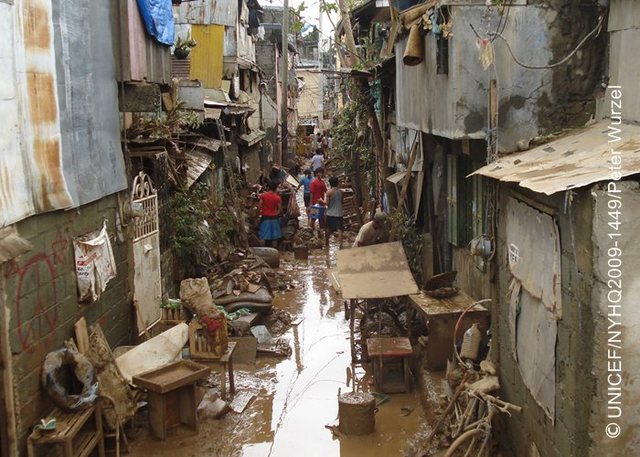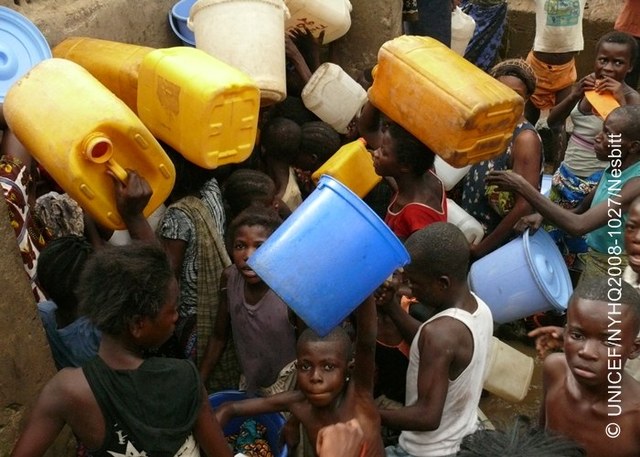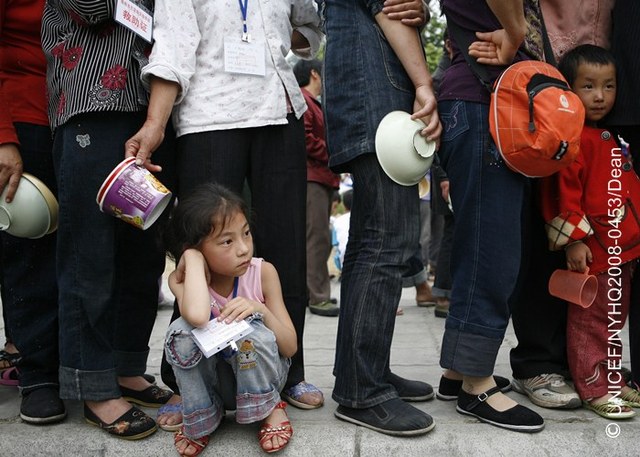Disparity in access to drinking water reaches up to 70 per cent in urban UNICEF calls for more investment to help children left behind by prosperity
2012-02-28
NEW YORK/ HONG KONG, 28 Feuary 2012 – Urbanisation leaves hundreds of millions of children in cities and towns excluded from vital services, UNICEF warns in The State of the World’s Children 2012: Children in an Urban World, its flagship publication. UNICEF thus calls for more investment in urban areas to help children left behind by prosperity. The Hong Kong Committee for UNICEF (UNICEF HK) also hopes that children in Hong Kong and China can be the centre of the government’s policies, helping the most marginalised children access to improved social services.
The report says, there are over 3.5 billion urban population worldwide in 2010 and of which it is estimated more than 1 billion are children. Children born in cities already account for 60 per cent of the increase in urban population and in a few years, the majority of children will grow up in towns or cities rather than in rural areas.
Cities offer many children the advantages of urban schools, clinics and playgrounds. Yet the same cities the world over are also the settings for some of the greatest disparities in children’s health, education and opportunities. Infrastructure and services are not keeping up with urban growth in many regions and children’s basic needs are not being met. In Madagascar, the difference between access to improved water among the poorest quintile of urban households and that for wealthiest quintile reaches 70 per cent.


Furthermore, children in low-income urban communities also face more urban challenges. They suffer the effects of air pollution, including respiratory infections, asthma and lead poisoning due to poor living environment. Studies in the United States show that chronic exposure to high levels of air toxins occurs disproportionately in poor urban communities settled by people of minority races. Every year polluted indoor air is responsible for almost 2 million deaths, almost half due to pneumonia, among children under 5.
“When we think of poverty, the image that traditionally comes to mind is that of a child in a rural village,” said UNICEF Executive Director Anthony Lake. “But today, an increasing number of children living in slums and shantytowns are among the most disadvantaged and vulnerable in the world, deprived of the most basic services and denied the right to thrive.”
Urban challenges in China – Migrant Children

Right now half of the world’s urban population is in Asia, and with an annual growth of 60 million, it is estimated that urban population will reach 6.3 billion people by 2050, of which 54 per cent population comes from Asia.
China, having an urban population of around 630 million, which represents 47 per cent of the total population, also reflects a rapidly changing world. Almost a tenth of China’s child population, 27.3 million, are migrant children, who or whose families migrate to city with a hope to escape from poverty.
Migrant children face challenges of what the local children seem to know from birth, for example, the meaning of a yellow traffic light. Road accidents are the second largest cause of injury death among children in China and many of the affected are migrant children. A special life skills programme was designed and funded by UNICEF China to help migrant children adapt urban life.
Making cities fit for children
The deprivations endured by children in poor urban communities are often obscured by oad statistical averages that lump together all city dwellers – rich and poor alike. When averages such as these are used in making urban policy and allocating resources, the needs of the poorest can be overlooked.
In this sense, a focus on equity is crucial – one in which priority is given to the most disadvantaged children wherever they live. The report also calls for greater recognition of community-based efforts to tackle urban poverty.
Widening disparity between the rich and the poor and deteriorating air quality still remain the alarming problems in Hong Kong. As 2012 Chief Executive Election has come to a head, UNCEF HK is calling for all candidates to put children at the heart of urban planning and to extend and improve services for all in their election platforms.
“We must invest more in balanced urban development, focusing greater attention on providing services to the children in greatest need,” Ms Irene Chan, Chief Executive of UNICEF HK said, “by doing this, we are promoting child friendly city, giving the chance to children to reach their full potential, and also the society of having a more well-educated healthy urban population.”
At the global level, UNICEF and the United Nations Human Settlements Programme (UN-Habitat) have worked together for 15 years on the Child-Friendly Cities Initiative building partnerships to put children at the centre of the urban agenda and to provide services and create protected areas so children can have the safer and healthier childhoods they deserve.
Please click here to read the full report Please click here to download the photos in the press release









